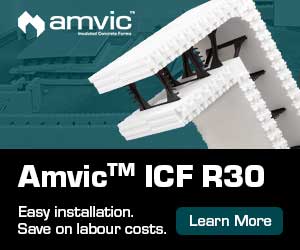By Tom Patton
In the last few years, technology has been racing forward and a new keyword, “smart,” has been applied to everything we touch and use. Artificial intelligence (AI) is rapidly moving into our lifestyle, whether we want it or not. Homes are being designed to be “smart” by installing this new technology to operate and control everything, from equipment controls, comfort levels, security, safety alarms, childproofing, lighting, entertainment, and much more.
The high-tech design integrates intelligent equipment, fixtures, and components (controllers, thermostats, sensors) to automate building operations, maximize efficiency, and reduce costs. This approach simplifies management while maintaining optimal indoor comfort across changing climate conditions and personal preferences. Additionally, enhanced safety and security features (lights, cameras, sensors) provide greater peace of mind for occupants.
A tech-savvy professional should integrate this technology during design, ensuring network compatibility across all fixtures and components for seamless operation. While requiring higher initial investment for design, installation, and advanced components, these upfront costs are ultimately offset by long-term efficiency gains throughout the home’s lifecycle.
While in the research and design phases, the design team should also look at products to construct the overall building envelope. One of the best smart building products to complement this efficient design is an Insulated Concrete Form (ICF). Yes, it is time to recognize ICFs as a “smart” building product. ICFs complement and exceed all smart home criteria.
An ICF building envelope has above-code continuous thermal insulation that eliminates thermal bridging. The double-insulated concrete core provides a unique thermal mass that actually controls the thermal transfer through the wall assembly in cold or hot weather. This accentuates and minimizes the design requirements, operations, and controls for the HVAC systems in delivering continual “smart” energy efficiency. The ICF building envelope addresses all the building science attributes for air, vapor, and moisture intrusion. ICFs provide an air-tight enclosure with a high sound attenuation, contributing to the overall comfort level for every room in the house. Energy evaluation ratings on ICF homes easily exceed RESNET standards for HERS ratings, well below the national average, and easily meet the levels for Net Zero Ready or even additional requirements to be Net Zero.
Security and resiliency are some of the greatest attributes offered by building with ICFs. The reinforced concrete core is fire resistant, tested to a 4-hour rating. The concrete core design is also structurally competent to address load path and shear wall designs, high winds, tornados, flying debris, and earthquakes. Community storm shelters and safe rooms are built with ICFs to meet FEMA and ICC 500 standards for extreme weather and high winds. Another, inherent “smart” attribute of ICFs.
An ICF building envelope delivers superior air tightness, vapor control, and thermal efficiency, creating the ideal foundation for a healthy smart home with excellent indoor air quality (IAQ) and eliminating mold/mildew risks. When paired with energy recovery ventilators that exchange stale indoor air with conditioned fresh air, the ICF structure seamlessly integrates with comprehensive smart home systems.
Designing a “smart” home doesn’t restrict architectural style to futuristic or modern aesthetics. ICFs offer exceptional design flexibility, accommodating various configurations, heights, widths, curves, large openings, and finishes. ICF Builder Awards winners and project case studies demonstrate how ICFs can achieve any architectural styling.
The investment in a smart home conserves resources while enhancing comfort, convenience, and safety. For optimal efficiency, the building enclosure must be equally “smart” and ICFs provide this compatibility. Though designing a high-performance ICF home costs more initially, this investment complements smart technology with substantial returns: maximized energy savings, complete security, and uncompromised comfort throughout the building’s entire lifecycle.
In this new year, 2025, it is now time for the design and construction industry to recognize ICFs as the best building material to be used to meet all these “smart” goals. Let’s promote the application of ICFs as a smart building product.

Tom Patton
Tom Patton had a 30-year architectural design background prior to joining the ICF industry in 2001 with the technical support department at ARXX. Over the last 20 years, Tom has worked with major ICF companies developing technical documentation, application details, and training programs, as well as consulting and promoting ICFs with various associations including the ICFMA, NRMCA, and codes and standards committees. Currently, Tom is Corporate Brand Ambassador for Fox Blocks and co-developer of the Fox Blocks Integrated Learning Center.








